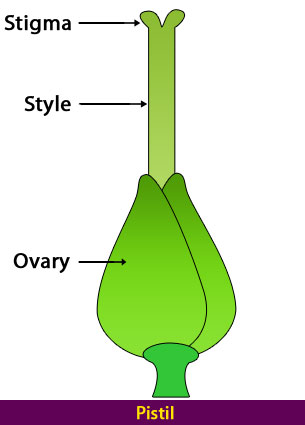Male And Female Flower Parts - How Do Flowers Differ Project Science Literacy Corner : In flowering plants, these structures can be borne together in a single bisexual flower, or the flowers can be only male (staminate) or only female (pistillate).
Male And Female Flower Parts - How Do Flowers Differ Project Science Literacy Corner : In flowering plants, these structures can be borne together in a single bisexual flower, or the flowers can be only male (staminate) or only female (pistillate).. The male part of a flowering plant is called the stamen and the female part is called the carpel. Learn vocabulary, terms, and more with flashcards, games, and other study tools. The stamen, which is male, produces pollen; Two types of flowers are found: In summary, there are two main reproductive parts of a flower, a male part and a female part.
The four main flower parts. The stamen has two parts: Learn vocabulary, terms, and more with flashcards, games, and other study tools. Others may contain one of the two parts and may be male or female. Most flowers have male parts, called stamens, and female parts, called carpels.

4 examine the flower for a pistil,.
Stamens may be called the male parts of a flower and collectively form the androecium. The presence of these parts differentiates the flower into complete or incomplete. The stamen, which is male, produces pollen; Most flowers contain male and female parts. The stamen consists of the anther and a filament. Stigma is the sticky top of a pistil; Sepals, petals, stamens (the male parts of a flower) and either carpels or a pistil (the female parts of the flower). It traps and holds pollen that touches it. The pistil is the female part of a flower. Not all species produce flowers with all four parts; The androecium is the male sexual organ, which produces the male gametophyte, pollen grain. In a flower the female reproductive part is called the pistil. The gynoecium is the female sexual organ, which produces the female gametophyte, ovule.
Flowers that contain both androecium and gynoecium are called hermaphroditic. In flowering plants, these structures can be borne together in a single bisexual flower, or the flowers can be only male (staminate) or only female (pistillate). The stamen has two parts: Each flower's pistil is made up of three main parts: Image © fancytapis under a creative commons licence.

Perfect flowers have both male (androecium) and female (gynoecium) reproductive structures, including stamens and an ovary.
The male part of a flowering plant is called the stamen and the female part is called the carpel. All lily flowers share the three parts common to all flowers: Perfect flowers have both male (androecium) and female (gynoecium) reproductive structures, including stamens and an ovary. The male and female parts are surrounded by the petals of the flower. The pistil, which is female, houses the ovule. When the two meet, they produce a seed, which creates a new generation of plants. The stamen, which is male, produces pollen; As mentioned, many flowers have both male (stamen) and female (pistil) parts. It has three main parts called, stigma, style and ovary. The reproductive parts of a flower consist of the following: 4 examine the flower for a pistil,. A flower has female and male parts. The stamens are the male part whereas the carpels are the female part of the flower.
Stigma is the sticky top of a pistil; Start studying male and female parts of flower. The main flower parts are the male part called the stamen and the female part called the pistil. Perfect flowers have both male (androecium) and female (gynoecium) reproductive structures, including stamens and an ovary. The flowers of plants that don't are known as incomplete flowers.

The presence of these parts differentiates the flower into complete or incomplete.
Carpels may be called the female parts of a flower and collectively form the gynoecium. The stamen, which is male, produces pollen; Petals, male parts and female parts. The pistil includes the ovary, the style and the stigma. Finally in the middle there are carpels, which at maturity contain one or more ovules, and within each ovule is a tiny female gametophyte. Start studying male and female parts of flower. When labelling a flower, the term pistil can be used to refer to one or more carpels. Not all species produce flowers with all four parts; Parts of a flower (source: Male flower parts the male part of the flower is called the stamen. The pistil, which is female, houses the ovule. The androecium is the male sexual organ, which produces the male gametophyte, pollen grain. The four main flower parts.

Komentar
Posting Komentar